If you have mushrooms growing from the ceiling, don’t panic!
Although it may seem daunting, it is simple to deal with mushrooms growing from your ceiling. All you need is a little knowledge and some basic supplies.
With the help of this guide, you’ll be able to get rid of those pesky mushrooms in no time. Plus, you’ll be able to prevent them from returning.
Follow the steps outlined in this guide to get rid of those mushrooms for good.
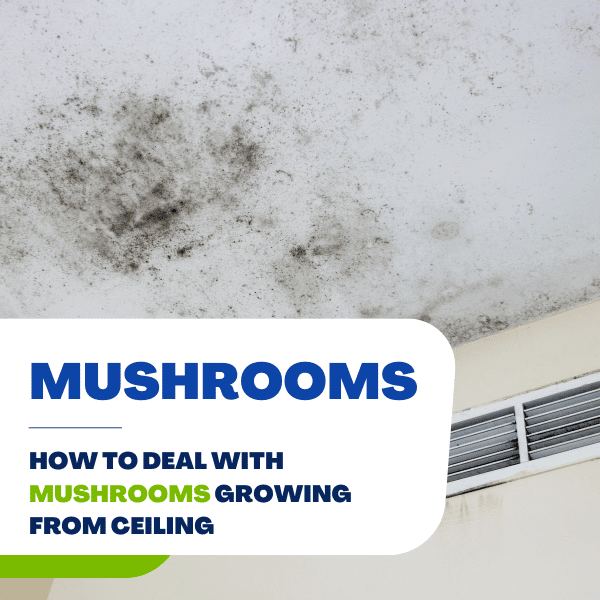
The Types Of Mushrooms Growing From Ceiling Of Your Home
The most common types of mushrooms that can grow in your home are:
Agaricus bisporus
This is the most common type of mushroom found in grocery stores. It has a white stalk and a brown cap.
Pleurotus ostreatus
Also known as the oyster mushroom, it is light brown and has a fan-like shape.
Lentinula edodes
The shiitake mushroom is dark brown or black and has a wrinkled surface.
Amanita muscaria
This mushroom is brightly colored, with red caps and white spots.
It is poisonous, and you can’t eat it.
What To Do If You Find Mushrooms Growing From Your Ceiling
If you find mushrooms growing from your ceiling, it is vital to take action right away. You will want to remove the mushrooms and their spores from your home as quickly as possible.
To do this, you can use a damp cloth to wipe them off the ceiling or a vacuum cleaner with a HEPA filter to suck them up. Consider hiring a professional pest control company to treat your home for mushrooms.
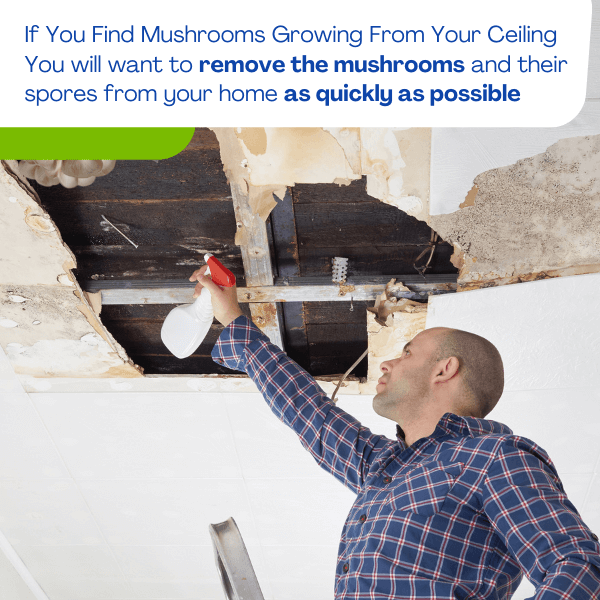
The Causes Of Mushroom Growth On Ceilings
There are a few possible causes of mushrooms growing on ceilings:
- high humidity
- water damage, and
- leaks
In some cases, the presence of mushrooms may indicate a more severe problem, such as water damage or a leaky roof. There is a possibility that you will experience black mold growth if you have these causes.
If you notice mushrooms growing on your ceiling, it’s crucial to investigate the root cause and take appropriate action to address it.
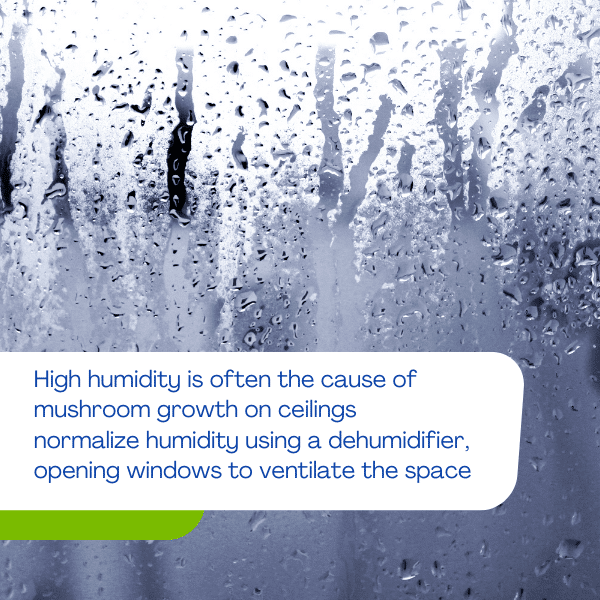
High Humidity
High humidity is often the cause of mushroom growth on ceilings. If your home has high humidity, it’s important to reduce it. Excess moisture can lead to mushroom mold growth.
You can do this to normalize the humidity of your home:
This may include using a dehumidifier, opening windows to ventilate the space, and using exhaust fans in moisture-prone areas like the kitchen and bathroom.
Water Leak or Damage
Water damage can also lead to mushroom growth on ceilings. If your ceiling has been damaged by water, it’s important to have it repaired as soon as possible. This will help to prevent further damage and the growth of mold and mildew.
Leaks can cause serious damage to your ceiling and home.
If you notice mushrooms growing on your ceiling, it’s essential to investigate the root cause and take appropriate action to address it. In most cases, the cause is high humidity or water damage.
Poor Ventilation
Poor ventilation can cause mushrooms to grow. They are prone to dark areas. If your home is poorly ventilated, there will be mold growth that can lead to mold exposure. Mold exposure can cause respiratory illnesses.
Leaky Roof
However, in some cases, the mushrooms may indicate a more serious problem, such as a leaky roof. If you’re unsure of the cause, it’s always best to consult a professional to ensure that your home is safe and free of any potential hazards.
These causes can also lead to bathroom mold growth. Mold mushrooms are dangerous if not immediately removed.
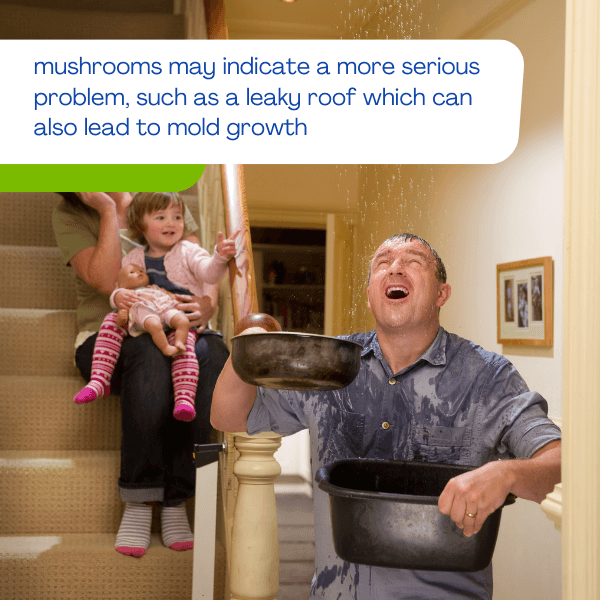
Why Do Mushrooms Grow From Ceiling?
Mushrooms can grow from the ceilings of homes for a variety of reasons. One reason is that moisture collects on the ceilings, providing a hospitable environment for mushrooms to grow.
Another reason is that the ceilings may be made of a material conducive to mushroom growth, such as drywall or plaster.
Finally, mushrooms may grow from ceilings because of spores in the air.
How to Get Rid of Mushrooms Growing From Ceilings
Mushrooms growing from the ceiling can signify dampness or water damage in your home. Address the issue immediately to prevent further damage and prevent mold spores from spreading.
Inspect your ceilings and walls for any leaks or signs of water damage, and repair them as soon as possible. You may also need to install a dehumidifier to help dry out the air in your home. Fungi require significant nutrients to grow, so better stop them immediately.
Sometimes, you may need to hire a professional to remove the mushrooms and clean your ceilings and walls. If you have any concerns, it’s always best to consult a Mushroom specialist.
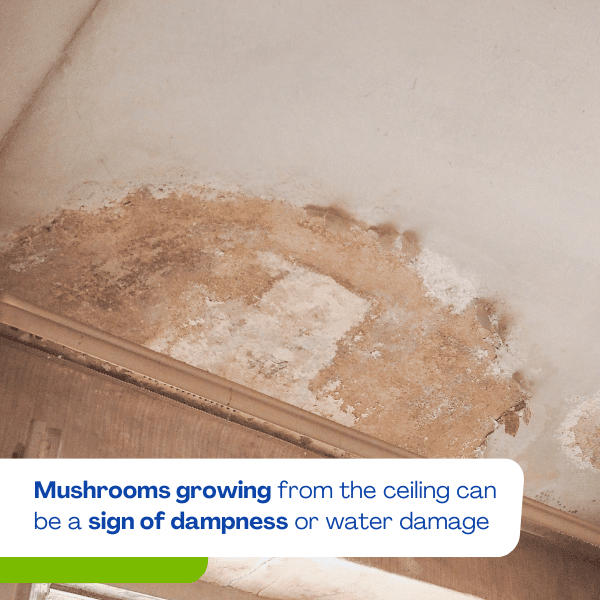
Prevention tips for avoiding future mushroom growth on ceilings
Mushrooms growing from ceilings can be an unsightly and potentially hazardous problem. To help prevent future mushroom growth on ceilings, follow the tips below:
- Make sure your home is well-ventilated, as this will help to discourage mold and fungus growth.
- Regularly clean your ceilings and walls with a damp cloth to remove any build-up of moisture or dirt that can provide a breeding ground for mushrooms. It will prevent mold growth from coming back.
- Inspect your ceiling regularly for any signs of mushrooms or fungus growth, and take action immediately if you see anything suspicious.
- If you have a problem with mushrooms growing from your ceiling, call in a professional to assess the situation and determine the best course of action.
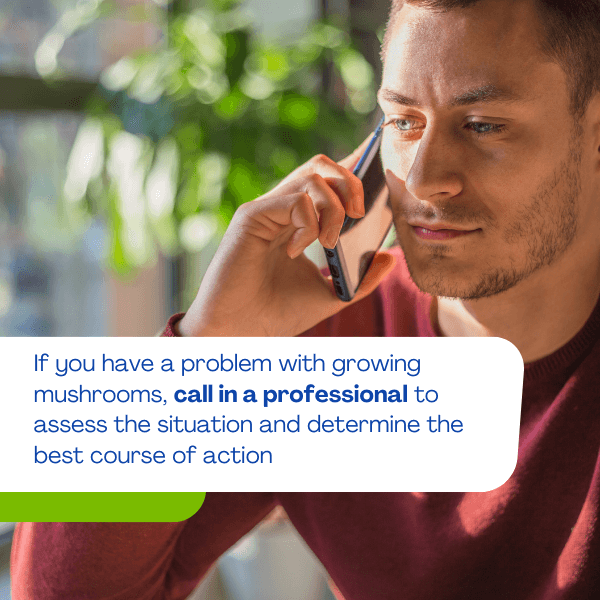
What to do if the mushrooms return
You should first identify the type of mushroom so you can choose the correct removal method. If you are unsure what type of mushroom it is, you can take a picture and send it to a local extension office for identification. Once you know what type of mushroom it is, you can safely remove it by hand or with a pesticide.
If the mushrooms grow from a crack in the ceiling, you will need to repair the damage so they cannot return. If the mushrooms are growing from a hole in the ceiling, you will need to patch the hole.
Once you have taken care of the problem areas, you can prevent the mushrooms from returning by keeping the area clean and free of debris.
How to Properly Clean Your Ceiling to Prevent Future Growth
- Remove any visible mushrooms from the ceiling and discard them in the trash.
- Vacuum the area around the mushrooms to remove any spores that may be present.
- Wipe the area down with a damp cloth to remove any residue.
- Allow the area to dry entirely before repainting or retiling, if necessary.
- Inspect the ceiling regularly for any signs of new growth and repeat the above steps as needed.
Following our guide, you can prevent mushrooms from growing from the ceiling. It is easy. If you can’t do it yourself, call a professional.
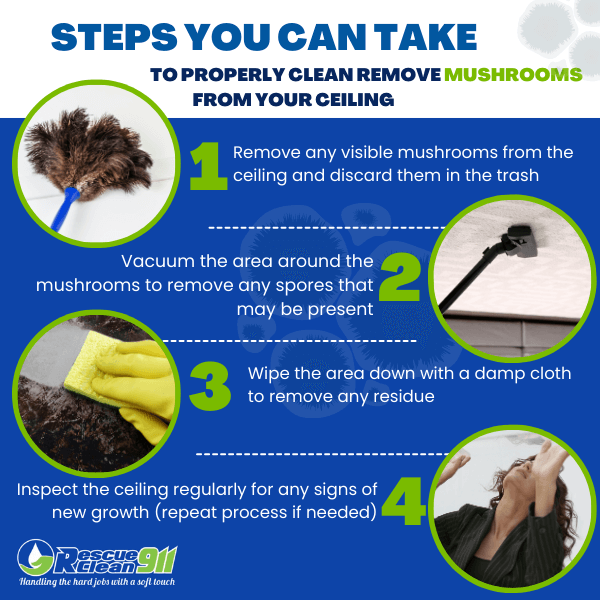
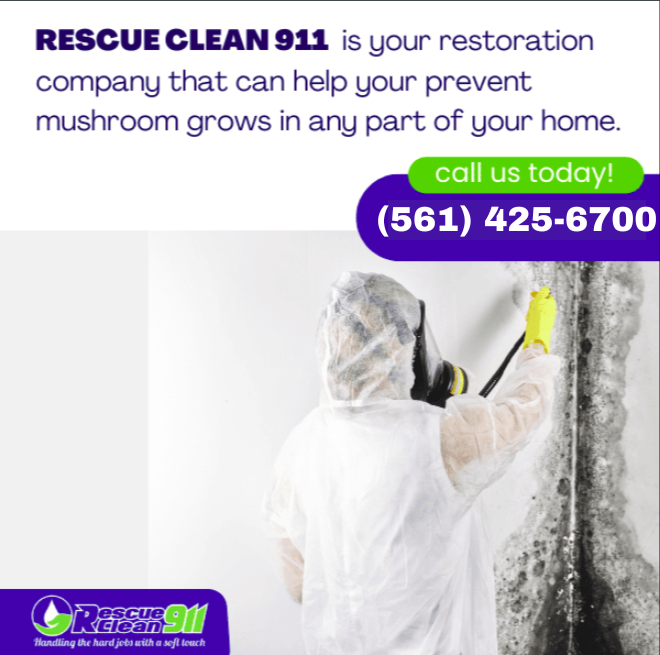
Rescue Clean 911 is your mold removal company that can help you prevent mushroom growth in any part of your home.
Our team of experts is available 24/7 to help remove mold from your home or office. We use the latest technology and equipment to do the job quickly and safely.
We can help you remove the black mold and mushrooms from your home quickly and safely. We have the experience and expertise necessary to get the job done right.
Call us today at 561-425-6700 to learn more about how to deal with mushrooms growing from the ceiling.
Book a call with us now!









